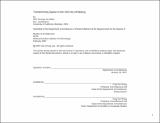Transforming space in the Old City of Beijing
Author(s)
Lee, Hon Chung
DownloadFull printable version (12.54Mb)
Other Contributors
Massachusetts Institute of Technology. Dept. of Architecture.
Advisor
Yung Ho Chang.
Terms of use
Metadata
Show full item recordAbstract
Under the pressure of globalization and the approaching 2008 Olympics, Beijing has undergone a rapid transformation that is dramatically eroding the old fabric. It has been argued that whether the capital city should be modernized or has its most historical characteristics preserved as much as possible, and place development elsewhere. The development in the old city of Beijing in the last decade, however, has been mainly driven by speed and economy and has expended very little effort on slow transformation and preservation. The traditional form - the differentiated courtyard architecture and the "hutong" neighborhood structure - has gradually been replaced by monolithic separated forms and wide roads under modernization. Through designing a current urban renewal project in the old city of Beijing, this thesis explores alternative ways to deal with transformation in the city, in order to discover the potential of other new urban forms that are not commonly used in the current development in Beijing, but yet hold the value and characteristics of traditional Chinese urban space and could preserve Beijing's identity. This thesis also explores possible ways to construct a new fabric that harmonizes with the old one. The old fabric represents a pattern of living that has been slowly transformed since the Yuan Dynasty (13th - 14th century); thus, it holds a strong identity and memory of Beijing. This thesis will deal with the challenge of preserving identity and memory in a fast-changing environment.
Description
Thesis (M. Arch.)--Massachusetts Institute of Technology, Dept. of Architecture, 2007. This electronic version was submitted by the student author. The certified thesis is available in the Institute Archives and Special Collections. Includes bibliographical references (p. 104-107).
Date issued
2007Department
Massachusetts Institute of Technology. Department of ArchitecturePublisher
Massachusetts Institute of Technology
Keywords
Architecture.